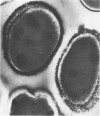Abstract
Uranium accumulated extracellularly on the surfaces of Saccharomyces cerevisiae cells. The rate and extent of accumulation were subject to environmental parameters, such as pH, temperature, and interference by certain anions and cations. Uranium accumulation by Pseudomonas aeruginosa occurred intracellularly and was extremely rapid (<10 s), and no response to environmental parameters could be detected. Metabolism was not required for metal uptake by either organism. Cell-bound uranium reached a concentration of 10 to 15% of the dry cell weight, but only 32% of the S. cerevisiae cells and 44% of the P. aeruginosa cells within a given population possessed visible uranium deposits when examined by electron microscopy. Rates of uranium uptake by S. cerevisiae were increased by chemical pretreatment of the cells. Uranium could be removed chemically from S. cerevisiae cells, and the cells could then be reused as a biosorbent.
Full text
PDF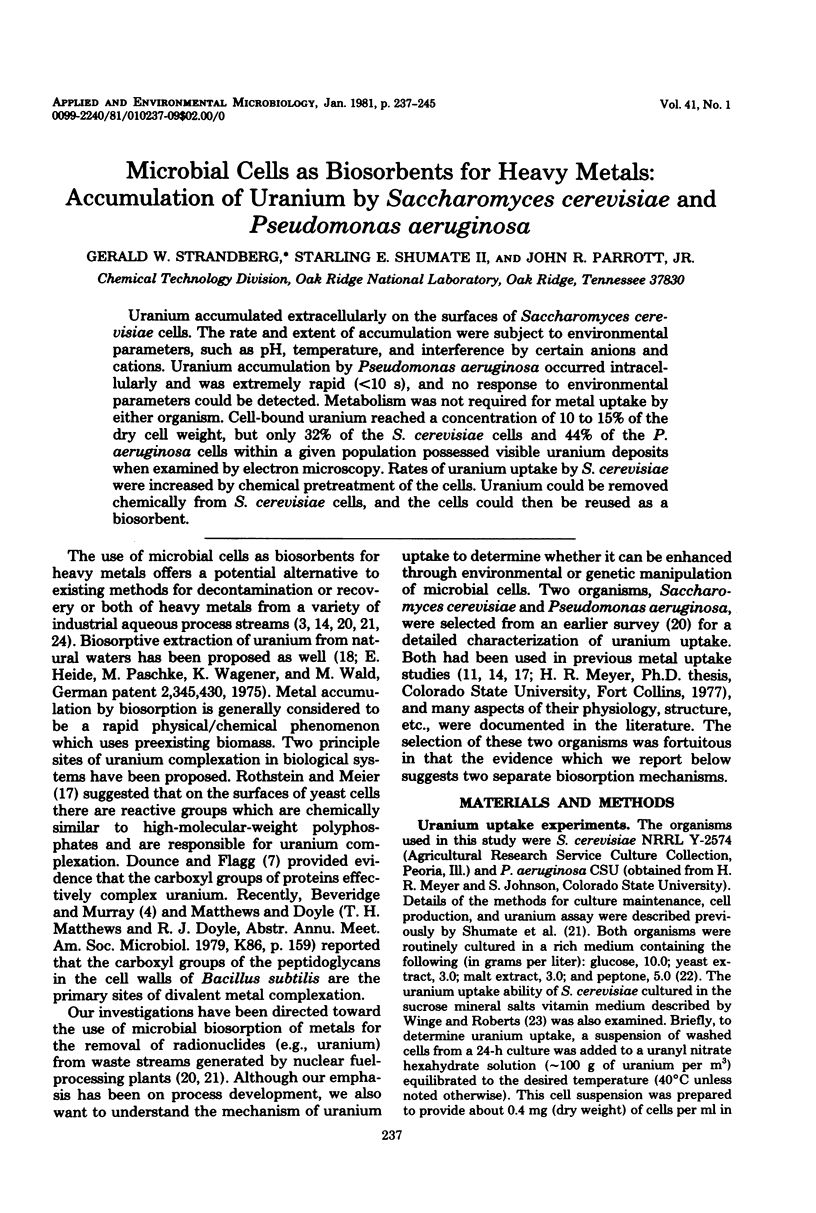
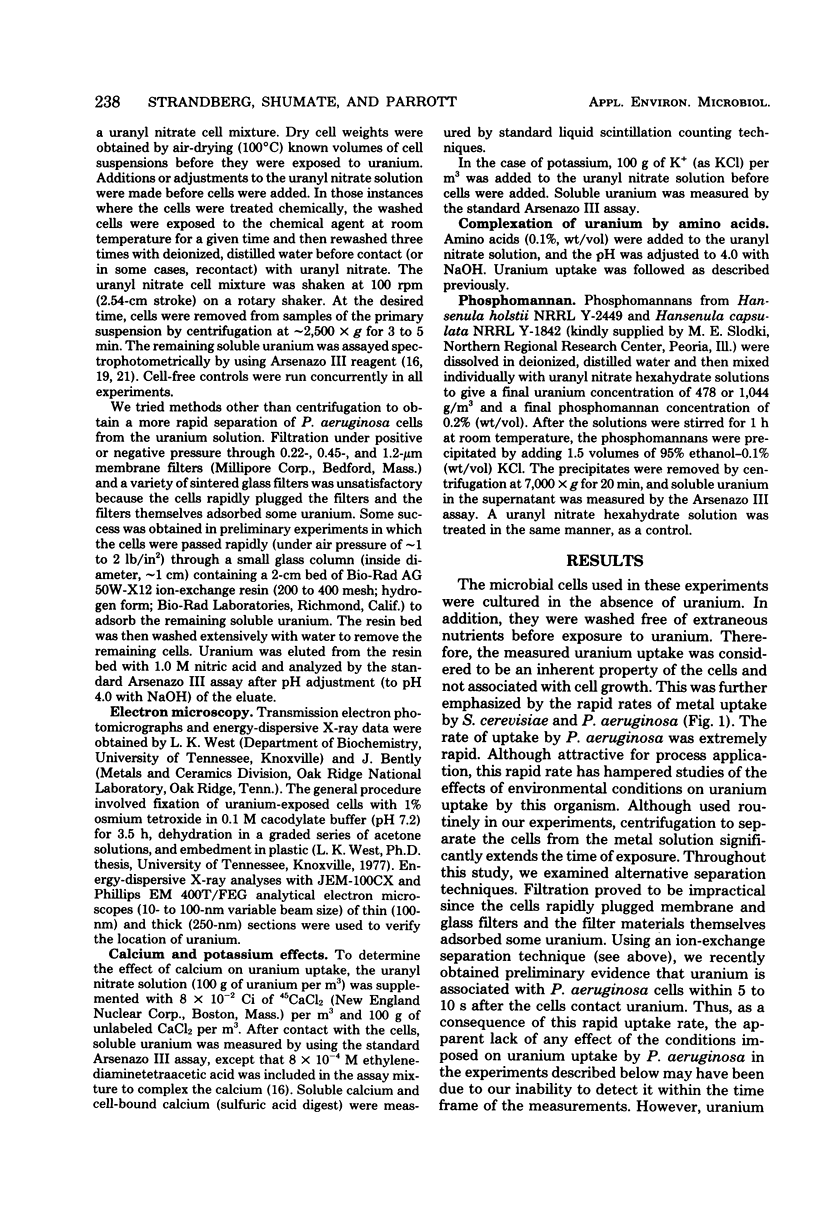
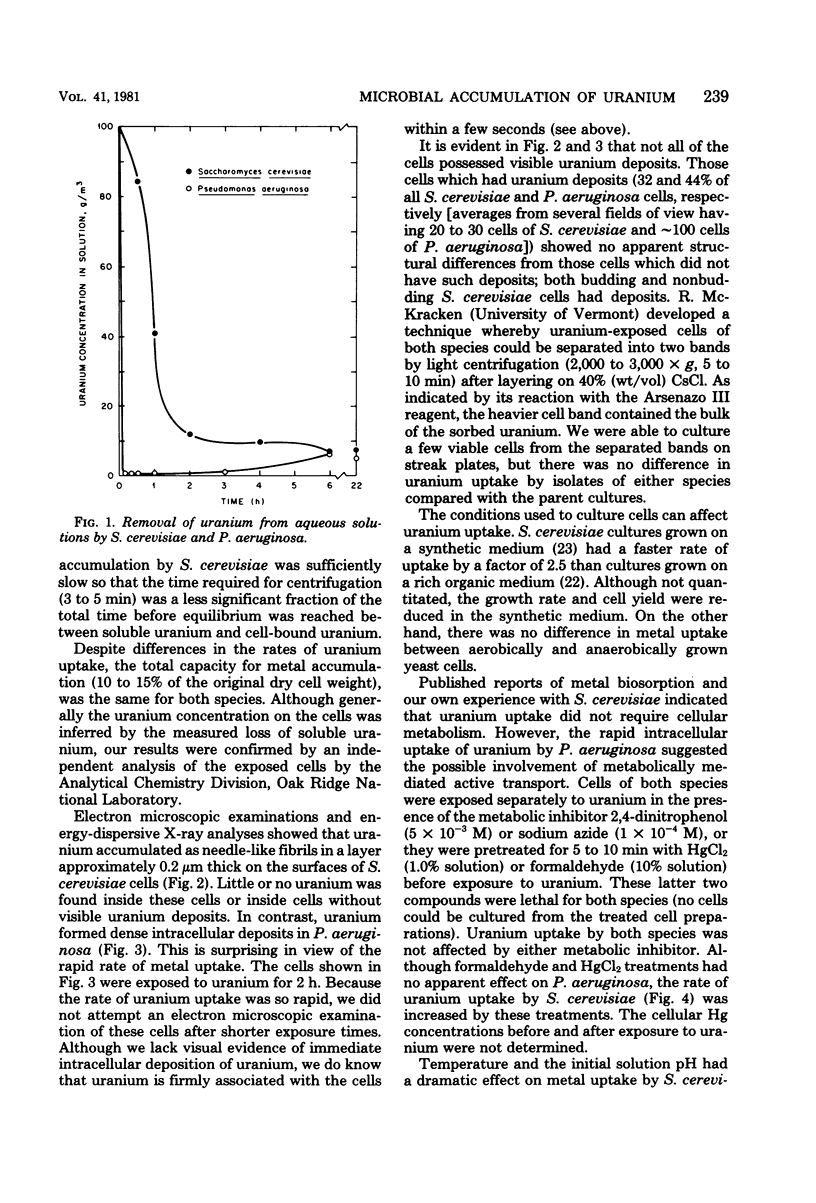
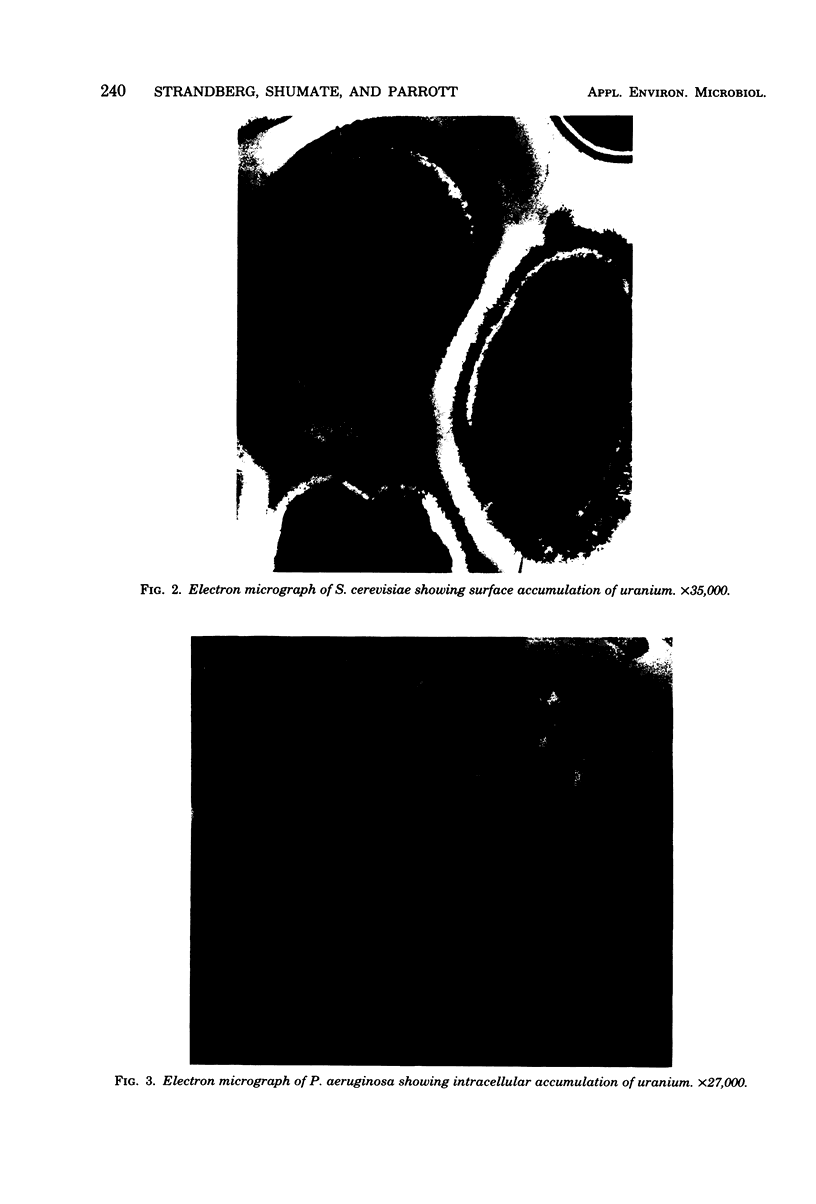
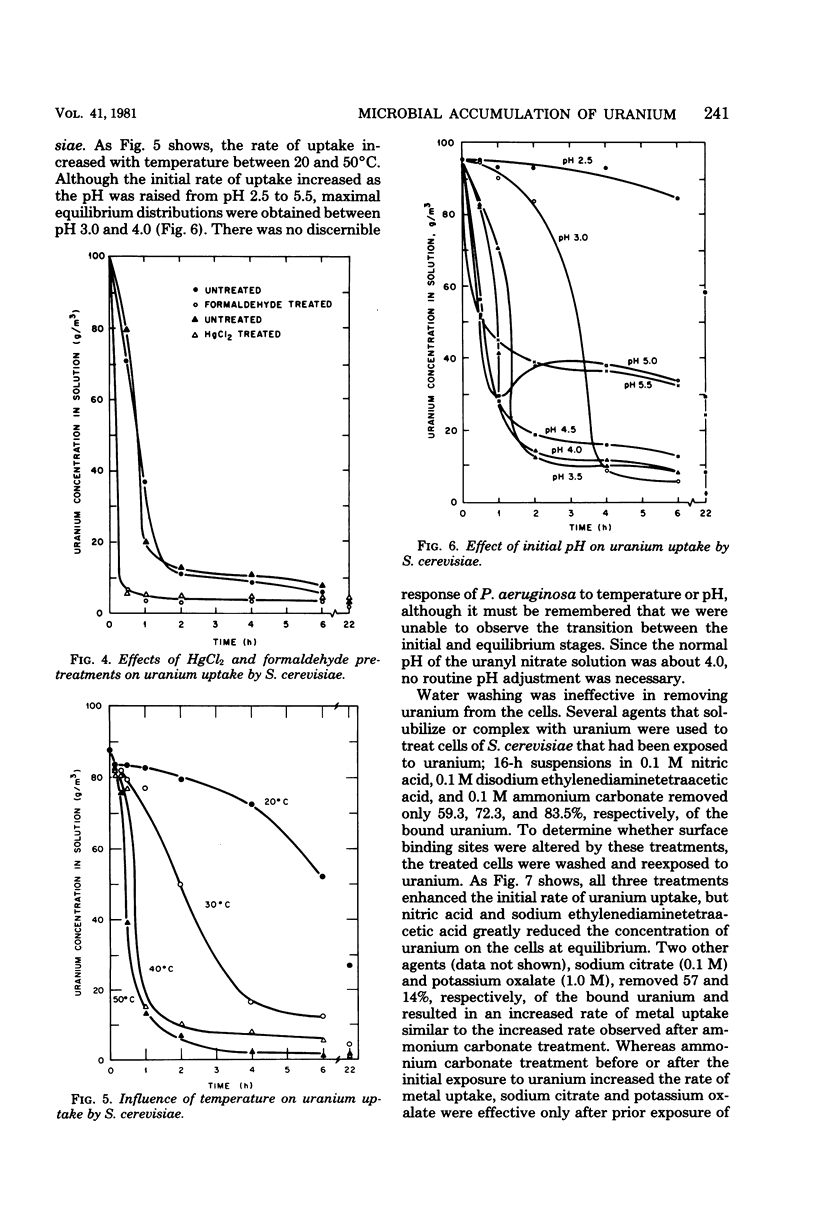
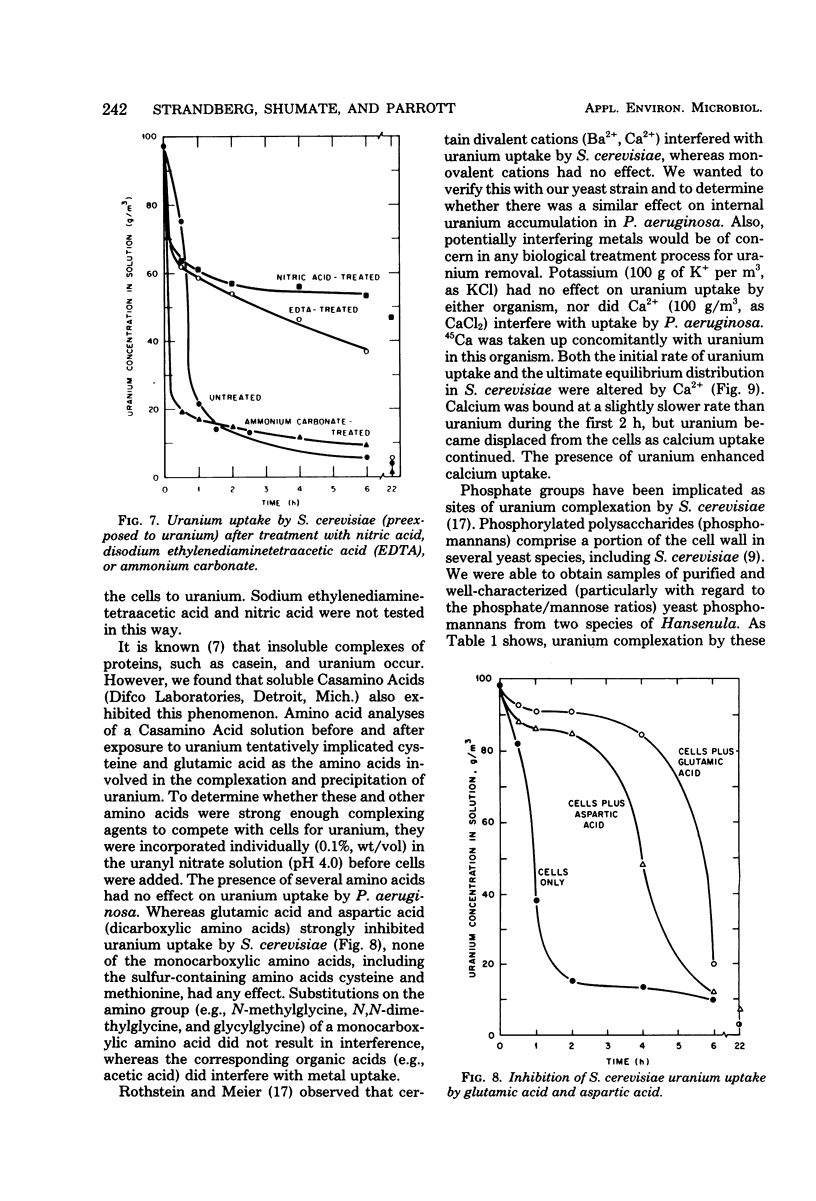
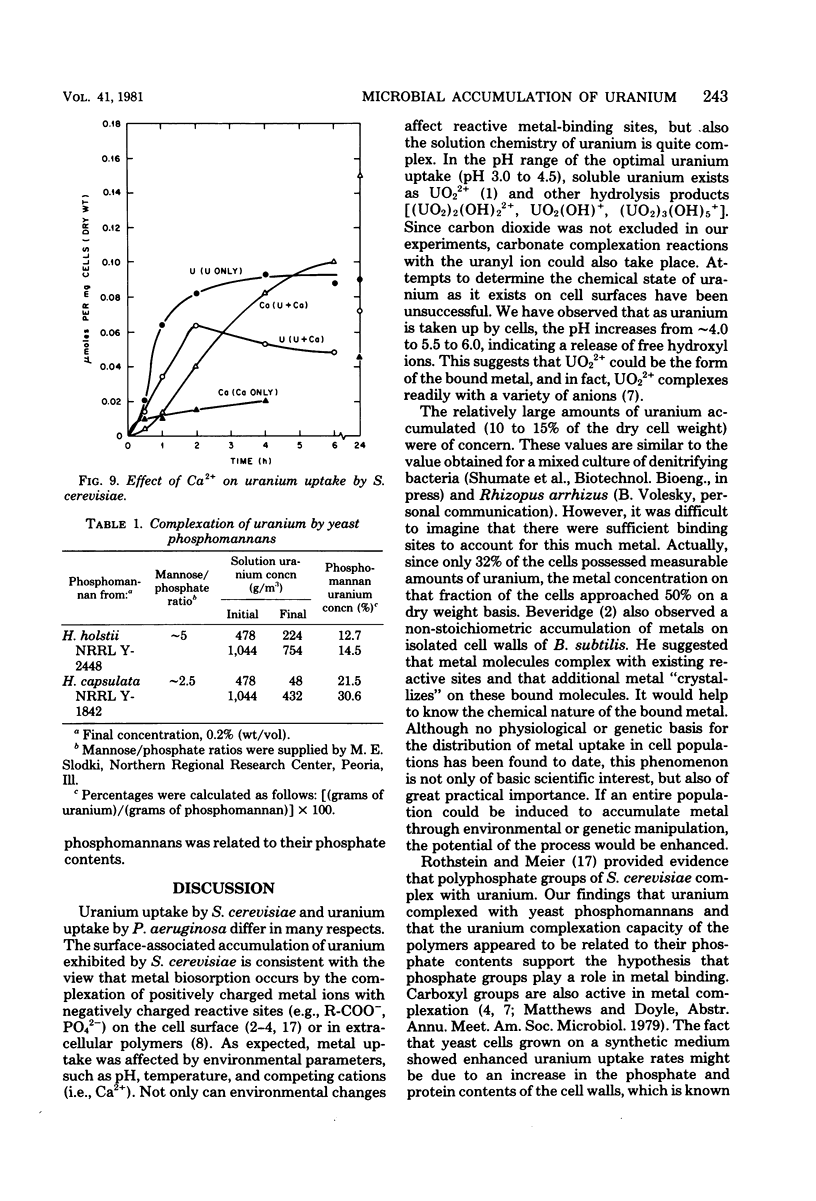
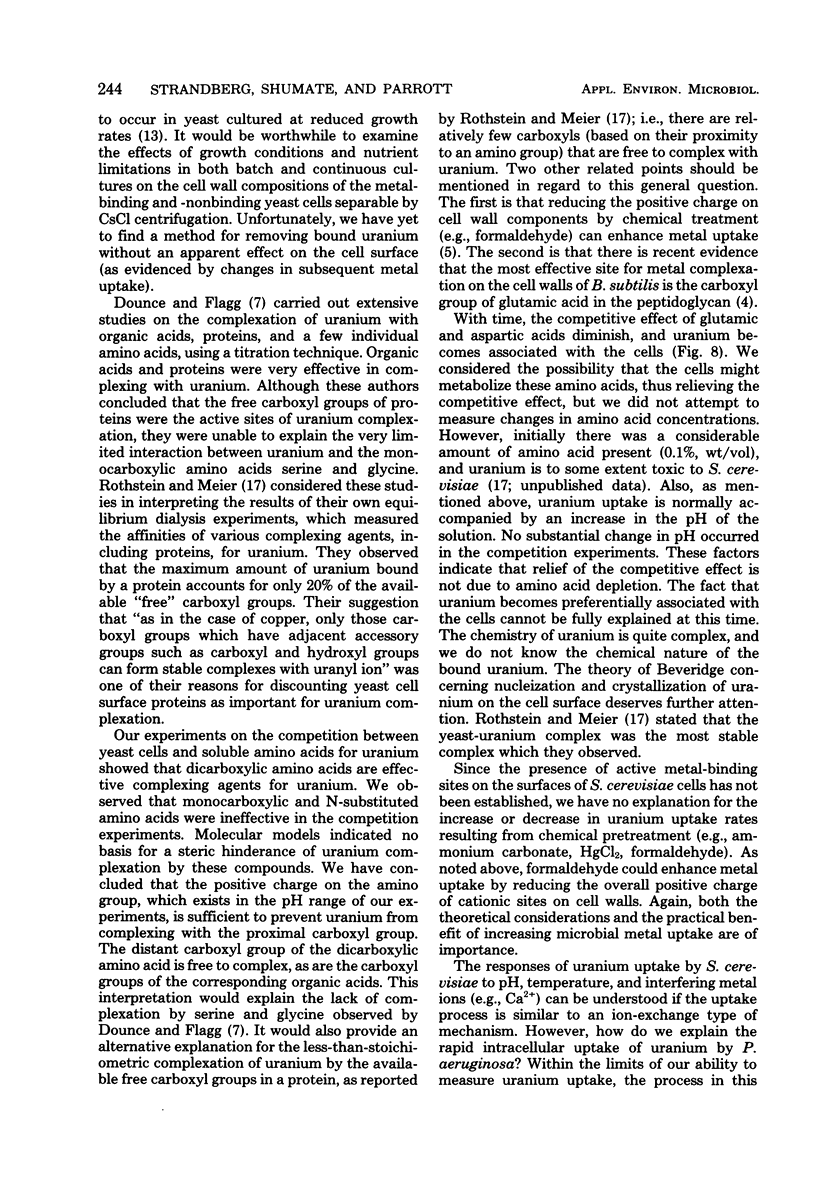
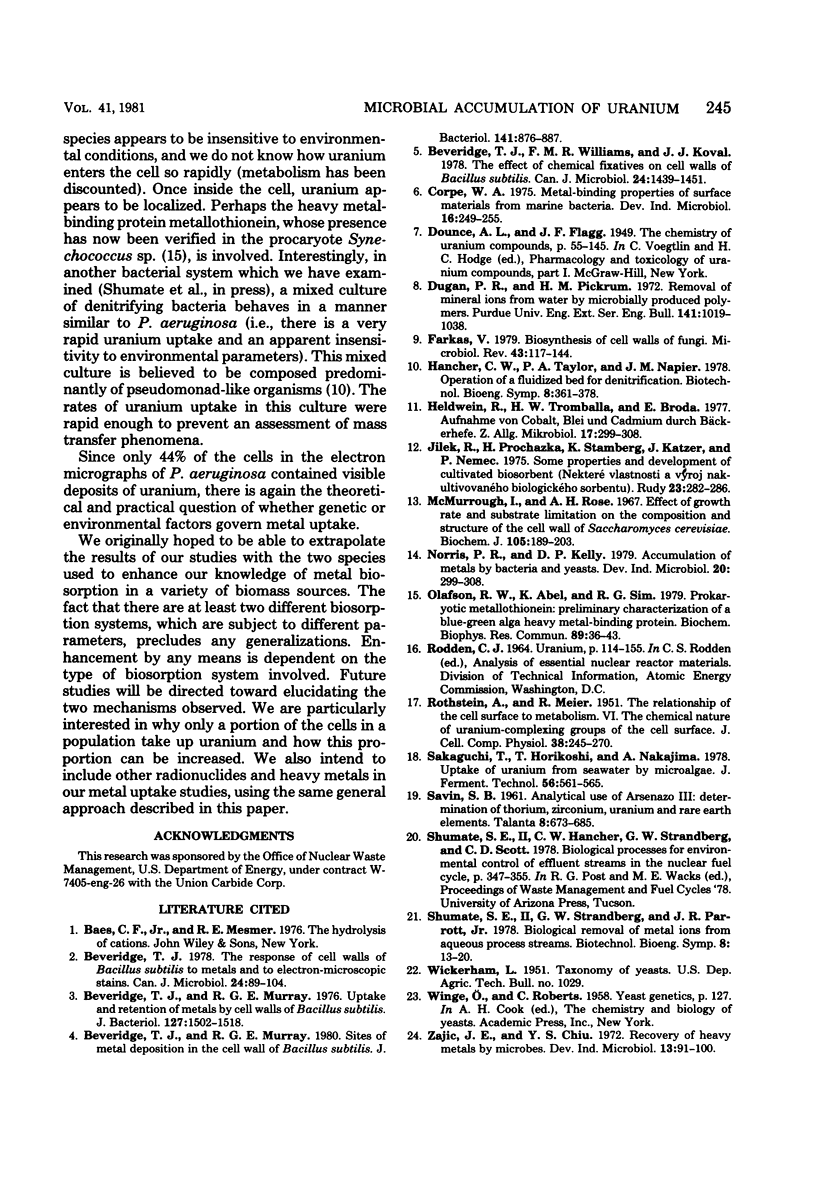
Images in this article
Selected References
These references are in PubMed. This may not be the complete list of references from this article.
- Beveridge T. J., Murray R. G. Sites of metal deposition in the cell wall of Bacillus subtilis. J Bacteriol. 1980 Feb;141(2):876–887. doi: 10.1128/jb.141.2.876-887.1980. [DOI] [PMC free article] [PubMed] [Google Scholar]
- Beveridge T. J., Murray R. G. Uptake and retention of metals by cell walls of Bacillus subtilis. J Bacteriol. 1976 Sep;127(3):1502–1518. doi: 10.1128/jb.127.3.1502-1518.1976. [DOI] [PMC free article] [PubMed] [Google Scholar]
- Beveridge T. J. The response of cell walls of Bacillus subtilis to metals and to electron-microscopic stains. Can J Microbiol. 1978 Feb;24(2):89–104. doi: 10.1139/m78-018. [DOI] [PubMed] [Google Scholar]
- Beveridge T. J., Williams F. M., Koval J. J. The effect of chemical fixatives on cell walls of Bacillus subtilis. Can J Microbiol. 1978 Dec;24(12):1439–1451. doi: 10.1139/m78-233. [DOI] [PubMed] [Google Scholar]
- Farkas V. Biosynthesis of cell walls of fungi. Microbiol Rev. 1979 Jun;43(2):117–144. doi: 10.1128/mr.43.2.117-144.1979. [DOI] [PMC free article] [PubMed] [Google Scholar]
- Heldwein R., Tromballa H. W., Broda E. Aufnahme von Cobalt, Blei und Cadmium durch Bäckerhefe. Z Allg Mikrobiol. 1977;17(4):299–308. [PubMed] [Google Scholar]
- McMurrough I., Rose A. H. Effect of growth rate and substrate limitation on the composition and structure of the cell wall of Saccharomyces cerevisiae. Biochem J. 1967 Oct;105(1):189–203. doi: 10.1042/bj1050189. [DOI] [PMC free article] [PubMed] [Google Scholar]
- Olafson R. W., Abel K., Sim R. G. Prokaryotic metallothionein: preliminary characterization of a blue-green alga heavy metal-binding protein. Biochem Biophys Res Commun. 1979 Jul 12;89(1):36–43. doi: 10.1016/0006-291x(79)90939-2. [DOI] [PubMed] [Google Scholar]
- ROTHSTEIN A., MEIER R. The relationship of the cell surface to metabolism. VI. The chemical nature of uranium-complexing groups of the cell surface. J Cell Physiol. 1951 Oct;38(2):245–270. doi: 10.1002/jcp.1030380209. [DOI] [PubMed] [Google Scholar]



